Factory producing aluminum raw materials and aluminum profiles
Factory producing aluminum raw materials and aluminum profiles is invested and built completely according to the model of applying high technology, modern,
- Mã SP:DN naunhom
- Giá gốc:80,000,000 vnđ
- Giá bán:75,000,000 vnđ Đặt mua
TABLE OF CONTENTS
------—1–-----
CHAPTER I. INVESTMENT NECESSITY AND PROJECT INVESTMENT OBJECTIVES 1
I.2. Consultants formulating construction investment projects 1
I.3. Preliminary description of the project 1
I.5. Market demand in the world 8
I.9. Investment capital of the Project 9
I.10. Investment and exploitation term of the project: 50 years 10
CHAPTER II. PRODUCTION TECHNOLOGY SCHEME 11
II.2. Production technology of the Project 13
II.2.1. Production process of aluminum raw materials (aluminum billets) of the Project………… 13
II.2.2. Aluminum profile production process of the project 29
II.2.3. Demand for imported scrap materials for production of the project 34
CHAPTER III. INVESTMENT SCALE 38
III.1. Land use demand of the Project 38
III.2. Construction items of the Project 39
III.2.1. Construction works in phase 1 41
III.2.2. Construction works in phase 2 42
CHAPTER IV. OPERATION AND LABOR UTILIZATION PLAN 53
IV.1. Company Organization Chart - Organizational Model 53
IV.2. Labor demand and plan 54
IV.3. Methods of organization, management and administration 55
CHAPTER V. ENVIRONMENTAL IMPACT ASSESSMENT 56
V.1. Impacts of the Project on the Environment 56
V.1.2. Impacts of the Project on the environment during operation 60
V.2. Measures to reduce environmental impacts 64
V.2.1. Project construction phase 64
V.2.2. Phase of putting the project into operation and use 69
CHAPTER VI. TOTAL INVESTMENT - INVESTMENT CAPITAL - INVESTMENT EFFICIENCY 75
VI.1. Total investment of the project 75
VI.1.1. Total investment amount of the Project 75
VI.1.2. Investment capital of the project 80
VI.2. Calculation of financial indicators of the project 81
VI.2.1. Purpose of calculation 81
VI.3. Socio-economic performance 82
CHAPTER VII. CONCLUSION - RECOMMENDATIONS 84
Factory producing aluminum raw materials and aluminum profiles is invested and built completely according to the model of applying high technology, modern,
CHAPTER I. INVESTMENT NECESSITY AND PROJECT INVESTMENT OBJECTIVES
I.1. About the Investor
Trading name : INOX TRADING AND PRODUCTION JOINT STOCK COMPANY
Represent : Mr. Hoang
Position : Chairman of the Board of Directors
- Address : Thanh Tri District, Hanoi City, Vietnam.
Tax code : 0122044245
- Charter capital: VND 19,950,000,000 (In words: Nineteen billion, nine hundred and fifty million VND).
- Business lines: Producing plastic and synthetic rubber in primary form. Casting iron, steel. Non-ferrous metal casting. Production of metal components. Forging, stamping, pressing and rolling metal, metal powder smelting. Mechanical processing, metal processing and coating.
I.2. Consultants formulating construction investment projects
MINH PHUONG CONSTRUCTION DESIGN AND CONSULTING INVESTMENT CORPORATION
- Address : 28 B Mai Thi Luu, DaKao Ward, District 1, Ho Chi Minh City.
Phone number: (028) 35146426; Fax: (08) 39118579
- Representative: Mr. Nguyen Van Thanh - Position: Director
I.3. Preliminary description of the project
- Project name: Factory producing aluminum raw materials and aluminum profiles.
- Land fund of the project: 20,000m2.
- Investment objectives: The factory producing aluminum materials and aluminum profiles is invested and built completely according to the model of applying high technology, modern, creating aluminum and aluminum profile products meeting Vietnamese and international standards to serve the construction industry, diversified production. The market goal that Minh Phat Stainless Steel Production and Trading Joint Stock Company aims at is to supply products to the domestic market and export to neighboring countries
+ Phase 1: Producing aluminum billets with a capacity of 4,500 tons/year (of which it is planned to invest in 3 aluminum smelters including: 2 furnaces, each furnace with a capacity of producing 20 tons of product quality obtained 96% aluminum and 1 aluminum smelter with a capacity of 20 tons of product quality obtained 99%).
+ Phase 2: Increase the production capacity of aluminum billets to 6,000 tons / year (in which it is planned to invest in 1 more aluminum smelter with a capacity of 20 tons, the product quality is obtained 96% aluminum) and add the production of aluminum profiles with a capacity of 4,000 tons / year from aluminum billet materials of the self-production project.
The implementation of the project ensures the requirements of environmental sanitation, security and order, traffic safety, construction works and landscape will be arranged in harmony with natural harmony to serve the needs of production and business with labor safety standards, maintaining environmental hygiene and safety to minimize the impacts of the project to the area and surroundings is always put first by investors.
I.4. Current status of aluminum raw materials (aluminum billets) and aluminum profiles in the world
In a down market that is experiencing a slow recovery in 2023, only India is outside the rest of the world in terms of aluminum production and consumption. The government's push towards new infrastructure, especially green energy, continues to boost domestic consumption and the overall stability of aluminum prices.
The country is currently the second largest producer of aluminum and also the third largest consumer in the world. However, many industry analysts expect India's aluminum demand to double in the next decade. This may impact short-term and long-term aluminum price forecasts.
Experts still insist that a slowdown in global growth, including in China, will reduce demand and drag down aluminum prices. In fact, many believe that LME spot aluminum prices in 2023 could fall as much as 13% year-on-year, at around $2,365 per ton. But in India, there are no such concerns.
Currently, India's per capita aluminum consumption is hovering around 3 kg.
This is still low compared to China's staggering 31.7 kilograms and about 12 kilograms belonging to the rest of the world. However, India could hit 9 million tons by 2033. This would be a significant increase from the current 4.5 million tons. Meanwhile, India contributes about 5% to total global aluminum production.
The Indian government has placed emphasis on infrastructure, mainly through programs such as "Make in India". All of this is likely to increase demand for aluminum from sectors such as power and construction
After the Ukraine conflict and the COVID-19 pandemic, the global aluminum market, especially in China and Europe, began to plunge. On the other hand, India has started to witness the transformation of the aluminum industry with major domestic projects such as the "Vande Bharat" train, urban railway development, promotion of 100% electrification and increased green power generation capacity.
In fact, many experts in India believe that this rising demand for aluminum will receive a boost from the transport sector due to the transition to "green energy" in public and private transport. Because electric vehicles will gradually replace fossil fuel vehicles across the subcontinent.
This will significantly increase aluminum consumption to build lighter cars. Meanwhile, almost everything else related to the growth of the Indian economy, such as urbanization, housing, public infrastructure, etc., will increase aluminum consumption as India transitions from a developing economy to a major world economy.
India also has huge bauxite reserves on its east coast that have so far been largely untapped.
In conclusion, despite global concerns about the possibility of falling aluminum prices, rising demand, India's bauxite reserves and focus on electric vehicles signal strong growth prospects for the metal.
Global primary aluminum production has increased by 2% year-on-year to 16.9 million tons in the first three months of 2023, according to an assessment by the International Aluminum Institute (IAI).
However, don't let these growth numbers fool you. Aluminum production outside China is flattening as the number of project restarts and project cuts are comparable. China, which accounts for nearly 60% of the world's base metals production, increased output by 3.9% compared to the first quarter of 2022 but the growth rate slowed sharply to just 0.9% in March. In terms of annual growth, China's output of 39.9 million tons last month was the lowest in a year, down 1.6 million tons from August 2022's record 41.5 million tons.
Increasing capacity and restarting some new projects cannot make up for low output in Yunnan province, where metallurgical plants have been forced to reduce operations due to drought causing power shortages. China's aluminum production currently depends on the weather in the south of the country. So is the global aluminum market.
Yunnan province accounts for about 12% of China's aluminum capacity and produced 4.2 million tons in 2022. It is a rapidly growing manufacturing hub as Chinese miners "migrate" from provinces that use coal to produce aluminum. They aspire to produce "green" aluminum using hydroelectric power.
However, hydropower needs rain and Yunnan is experiencing its worst drought in decades. The provincial capital Kunming, which has received only 10% of its rainfall since the beginning of the year above normal, has issued an orange drought warning, which is the 2nd most severe alert level in the 4-tier system. Many other towns are similar, according to China Daily. Businesses that use industrial energy, including aluminum smelters, have been asked to reduce operations to balance the power system. About 2 million tons of the province's production capacity have been shut down, according to Li Jiahui, an analyst at consultancy Shanghai Metals Market. Although other provinces have restarted the plant, or put into operation new electrolysis lines, the impact has not been enough to offset the damage in Yunnan.
A major factor driving the market studied is the growing construction activities in the Asia-Pacific region. The growing demand for aluminum from the food, packaging, and pharmaceutical industries is likely to favor the market growth.
However, strict regulations and environmental concerns about aluminum processing are likely to hinder the market growth.
Growth in the electric vehicle market is likely to bring new growth opportunities.
Asia-Pacific holds the highest market share and is expected to dominate the market during the forecast period.
Growing demand from the construction and construction industry. In the construction and construction industry, aluminum is the second most widely used metal. It is widely used in windows, curtain walls, roofing and cladding, sun shading, solar panels, railings, shelves and other temporary structures. The revenue of the global construction industry is expected to grow steadily over the next few years. By the end of 2022, it is predicted to be around $8.2 trillion.
China comprises the world's largest construction market, comprising 20% of all global construction investment. China is expected to spend nearly $13 trillion on buildings by 2030. According to China's National Bureau of Statistics, the total output value of construction enterprises in China in the fourth quarter of 2022 was approximately CNY 276 billion (~USD 40 billion), an increase of approximately 50% compared to the previous quarter (~USD 27.6 billion).
Privately owned housing units were granted building permits at a seasonally adjusted annual rate of 1,873,000 in December 2021, according to figures released by the U.S. Census Bureau and the U.S. Department of Housing and Urban Development. A total of 1,128,000 single-family permits are issued each year. The annual unit authorization rate in structures with five or more units is 675,000. In 2021, 1,724,700 housing units were planned to be issued through building permits. This is 3.5% higher than the 1,471,100 predicted for 2020.
India is likely to see an investment of around $1.3 trillion in housing over the next seven years, during which time it is likely to see the construction of 60 million new homes. The availability of affordable housing is expected to increase by about 70% by 2024. Housing for all in 2022 by the Indian government is also a big game-changer for the industry.
The value of new building construction at current prices in the UK in 2021 saw strong growth (3.5%) to GBP 115,579 million (~USD 1,59,008.77 million) after falling by 15.9% to GBP 100,199 million (~USD 1,28,622.12 million) in 2020.
Overall, recovering construction activities worldwide are expected to boost aluminum demand from the construction and construction industry during the forecast period.
In theory, things could change as the rainy season approaches, but in reality, no one knows if rainfall will be enough for metallurgical plants to reactivate capacity.
The fact that investors deploy projects like us always pay attention to the world aluminum price because this is one of the important metals used a lot in the production of fields, especially construction. That interest also stems from the fact that world aluminum prices are highly volatile, greatly affecting the activities of enterprises investing in the field of aluminum billet and aluminum profiles such as Minh Phat Stainless Steel Production and Trading Joint Stock Company.
Factory producing aluminum raw materials and aluminum profiles is invested and built completely according to the model of applying high technology, modern,
v Factors affecting the market for raw aluminum and aluminum profiles in the world
- Supply and demand situation in the market: Fluctuations in supply and demand in the market affect world consumer demand. When demand increases and supply decreases, aluminum prices will rise.
- Political situation: Political strife and war can affect world aluminum prices. Especially aluminum manufacturers and exporters in the affected area
- Economic situation: As the economy develops, the demand for aluminum will increase and aluminum prices will increase accordingly
- The impact of the Covid 19 epidemic: The Covid 19 epidemic may affect the demand for aluminum in some sectors, but also cause disruptions in the supply chain and production, aiming to affect prices.
- Production output: The production output of aluminum producers such as investors also affects the world aluminum price. If product production is interrupted, aluminum prices will rise.
- Quality standards: if there are stricter quality standards and environmental regulations, production capacity will decrease and aluminum prices will increase.
v Future world market forecast
Currently, world aluminum prices are on an upward trend in 2023 due to increased demand and reduced output. However, aluminum prices will also depend on many external factors such as the political situation, the supply and demand situation in the market, the impact of the Covid-19 epidemic and the adjustment of economic and trade policies of countries. Experts forecast that the price of aluminum raw materials and aluminum profiles for different industries will still be volatile in the near future. However, experts forecast that world aluminum prices will still fluctuate in the near future and tend to increase due to increased demand and reduced output. This is also one of the important factors to make investment and business decisions in the aluminum sector.
v Growing demand from the construction and construction industry
In the construction and construction industry, aluminum profiles are the second most widely used metal. The revenue of the global construction industry is expected to grow steadily over the next few years. By the end of 2022, it is predicted to be around $8.2 trillion.
China comprises the world's largest construction market, comprising 20% of all global construction investment. China is expected to spend nearly $13 trillion on buildings by 2030. According to China's National Bureau of Statistics, the total output value of construction enterprises in China in the fourth quarter of 2022 was approximately CNY 276 billion (~USD 40 billion), an increase of approximately 50% compared to the previous quarter (~USD 27.6 billion).
Privately owned housing units were granted building permits at a seasonally adjusted annual rate of 1,873,000 in December 2021, according to figures released by the U.S. Census Bureau and the U.S. Department of Housing and Urban Development. A total of 1,128,000 single-family permits are issued each year. The annual unit authorization rate in structures with five or more units is 675,000. In 2021, 1,724,700 housing units were planned to be issued through building permits. This is 3.5% higher than the 1,471,100 predicted for 2020.
India is likely to see an investment of around $1.3 trillion in housing over the next seven years, during which time it is likely to see the construction of 60 million new homes. The availability of affordable housing is expected to increase by about 70% by 2024. Housing for all in 2022 by the Indian government is also a big game-changer for the industry.
The value of new building construction at current prices in the UK in 2021 saw strong growth (3.5%) to GBP 115,579 million (~USD 1,59,008.77 million) after falling by 15.9% to GBP 100,199 million (~USD 1,28,622.12 million) in 2020.
Overall, recovering construction activities worldwide are expected to boost aluminum demand from the construction and construction industry during the forecast period.
v Essential notes for investors
- It is recommended to monitor updated information on world aluminum prices and factors affecting aluminum prices such as the situation of supply and demand in the market and the impact of the Covid 19 epidemic to make reasonable investment decisions.
- Should refer to reputable sources and learn carefully about the market and enterprises operating in the aluminum industry before investing.
- A clear investment strategy should be put in place and ensure that investment in aluminum production does not exceed the financial capabilities of individuals or organizations
- It is recommended to diversify the portfolio by investing in many different industries and types of investments to minimize risks.
Image 1 World aluminum prices continue to increase sharply
Image 2 The level of increase/decrease in aluminium reserves of the
LME floor every month
I.4.1. Advantages, disadvantages, opportunities and challenges of aluminum production industry in Asia in the current period
I.4.1.1. Advantages
World aluminum prices have risen 31% year-to-date, now reaching their highest level in a decade, and are expected to soon exceed the record highs of 2010 as demand this year is forecast to increase by the largest ever as the global economy recovers from the Covid-19 pandemic.
After years of demand exceeding supply due to China's sharp increase in output, this year's aluminum market turned shortage due to strong demand for packaging materials after the Covid-19 pandemic. Currently, the price of aluminum futures for 3-month delivery on the London exchange is about 2,600 USD. Share prices of the world's major aluminum producers have risen by double digits this year. Accordingly, the share price of Alcoa (USA) increased by 68%, while that of Norsk Hydro (Europe) increased by 47%.
Aluminum raw materials and aluminum profiles are widely used in many fields, such as construction is one of the industries that is growing strongly along with the momentum of world economic recovery.
The investor has a methodical business strategy, will offer products with reasonable prices, modern production lines, closed production processes and apply strict standards in production and quality control.
Factory producing aluminum raw materials and aluminum profiles is invested and built completely according to the model of applying high technology, modern,
I.4.1.2. Disadvantages
Businesses may face challenges such as a sharp drop in market demand, shrinking operating capacity, and reduced profits,...
Due to the strategy of aluminum raw materials and aluminum profiles focusing on new production, it has not been able to compete with developed countries with a wealth of experience, capital and technology;
Lack of skilled and highly qualified human resources.
I.4.1.3. Opportunities
Production activities and prices of aluminum materials will return strongly after the Covid19 pandemic is controlled on a global scale. From there, the demand for demand increases.
The trend of shifting investment and supply chains of some industries out of China, including the aluminum industry.
Currently, the room of the European market for aluminum raw materials and aluminum profiles is still very large. Therefore, improving competitiveness is a way for businesses to develop and take advantage of FTAs for export.
The market's demand for aluminum is huge, but to meet it, it must be transformed from raw production to products and parts with higher technology. At the same time, in addition to rules of origin, enterprises must also satisfy the requirements of consumers in fastidious markets such as the EU such as environmental protection, sustainable development, ensuring benefits for employees.
Since there was no Free Trade Agreement with the European Union (EU), aluminum profiles and aluminum ingots producers had many partners from the EU. However, in addition to price requirements, products must also meet very strict standards related to environmental protection and labor issues.
I.4.1.4. Challenge
The aluminum industry is facing many challenges, typically the problem of excess productivity, unfair competition from imported products and the risk of trade remedies. Besides, enterprises in the aluminum industry still completely depend on aluminum raw materials and imported scrap to produce aluminum products.
In recent years, the capacity of the aluminum industry has begun to have a surplus, the output has only reached 70% of the designed capacity, the amount of goods far exceeds the domestic market demand and export. In Q1 2023, export factories will remain at only 30% capacity, mainly to keep jobs for workers while corporate revenues continue to be low and cash flows dry up. Some businesses are conducting dumping, causing market disturbances.
I.5. Market demand in the world
Global aluminum prices could be affected by China's move. Some experts believe that the expansion of China's aluminum industry to Indonesia will have a significant impact on the global aluminum market. Aluminum prices can have a significant impact.
Based on the survey arguments, investigation of market demand and current regulations, the project of aluminum raw materials and aluminum shaping factory decides to invest with the following scale and capacity:
Table 1 Scale and capacity of the project
|
sequence number |
Directory |
Amount (tons/year) |
|
|
Stage 1 |
Stage 2 |
||
|
1 |
Aluminum billet production |
4.500 |
6.000 |
|
2 |
Production of shaped aluminum |
- |
4.000 |
Source: Minh Phat Inox Trading And Production Joint Stock Company
I.6. Project Objectives
The factory producing aluminum materials and aluminum profiles is invested and built completely according to the model of applying high technology and modernity, creating aluminum and aluminum profile products meeting Vietnamese and international standards to serve the construction industry. Target the market that Minh Phat Inox Trading And Production Joint Stock Company the goal is to supply products to the domestic market and export to neighboring countries.
I.7. Project progress
Table 2 Project implementation progress
|
Sequence number |
Job Description |
Time |
|
1 |
Completion of legal and land procedures of the project |
October 2023 to October 2024 |
|
2 |
Stages of implementation of construction and installation of equipment |
October 2024 to October 2025 |
|
3 |
Phase of putting the project into operation and use |
January 01, 2026 |
I.8. Forms of investment
- Form of investment: New construction investment
- Form of management:
+ Minh Phat Inox Trading And Production Joint Stock Company directly manage the Project through the Project Management Board established by the investor.
+ The operation process of the Project is consulted by domestic and foreign experts.
I.9. Investment capital of the Project
Investment capital:
Total investment capital: 159.950.000.000VND (Amount in letters: One hundred and fifty-nine billion, nine hundred and fifty million), equivalent 6.615.000USD (Amount in letters: Six million, six hundred and fifteen thousand US dollars), Vietcombank's USD foreign currency exchange rate is 24,180 VND/USD on October 3, 2023, of which:
- Capital contribution of investors (30%): 47.985.000.000VND (Amount in letters: Forty-seven billion, nine hundred and eighty-five million), equivalent 1.984.000 USD (Amount in letters: One million, nine hundred and eighty-four thousand U.S. dollars).
- Mobilized capital (70%): 111.965.000.000VND (Amount in letters: One hundred and eleven billion, nine hundred and sixty-five million), equivalent 4.630.000 USD (Amount in letters: Four million, six hundred and thirty thousand US dollars).
I.10. Investment and exploitation term of the project: 50 years
CHAPTER II.
PRODUCTION TECHNOLOGY SCHEME
II.1. Overview of technology of aluminum raw material production industry and production of shaped aluminum
Any industry in the world cannot develop stably without the use of modern technologies. The aluminum industry is also actively applying modern technologies and is currently developing at an increasingly high rate. In the aluminum factory project development process, the choice of production method plays the same important role as the selection of materials. For aluminum materials, it is necessary to choose one of the most popular fabrication methods today: extrusion, casting, rolling and forging. Each method has a different impact on physical properties and production costs.
Aluminum is a soft, light silver-gray metal with a matte, flexible metallic luster, high melting point and no oxidation, making aluminum have a respectable durability, for this reason, aluminum is widely used in daily life such as roofing, building wall production, spoons, forks, electrical conductors,...
v Raw materials to create aluminum
Aluminum compounds occur in all clays, but the ore most used to produce pure aluminum is bauxite.
Bauxite consists of 45-60% aluminum oxide, along with various impurities such as sand, iron and other metals.
Although some bauxite mines are hard rock, most consist of relatively soft dirt, easily dug from open pit mines.
It takes about 4 lb (2 kg) of bauxite to make 1 lb (0.5 kg) of aluminum metal.
Caustic soda (sodium hydroxide) is used to dissolve aluminum compounds contained in bauxite, separating them from impurities. Depending on the composition of bauxite ore, small amounts of other chemicals can be used in aluminum mining such as starch, lime and sodium sulfide.
The other main component used in metallurgical operations is carbon. About half a pound (0.2 kg) of carbon is used for every pound (2.2 kg) of aluminum produced.
Because aluminum smelting involves passing an electric current through the molten electrolyte, it requires large amounts of electrical energy. On average, producing 2 lb (1 kg) of aluminum requires 15 kilowatt-hours (kWh) of energy. The cost of electricity accounts for about a third of the cost of aluminum smelting.
v Properties and applications of aluminum
- First, because it is easy to laminate, lightweight, and conducts electricity well, aluminum is used as an electrical conductor because the conductor needs to be light to be able to stretch and pull away.
- Secondly, aluminum has high weather resistance due to the antioxidant film, so aluminum does not oxidize directly, this property is suitable for the application of doors and windows that are exposed to a lot of sun and rain.
- Third, aluminum is very light, so aluminum is a good solution in many areas such as making: aircraft shells, spaceship covers, phone cases ... But usually in the form of aluminum alloy because pure aluminum does not meet the hardness. To manufacture products, parts requiring detail need to apply precision mechanical machining methods.
- Finally, aluminum that reacts easily with oxygen should be used in fireworks. In addition, with a high enough temperature, aluminum will react with oxygen to form a well-known aluminum heat reaction used to melt metal, typically applied to welding railway tracks.
Aluminum is one of the most abundant metals on Earth and is produced from the extraction of cryolite and bauxite. This is because these two minerals are a major source of aluminum; Bauxite is processed to make alumina, which is then refined to make aluminum.
Aluminum is one of the most used industrial metals because it is extremely versatile. Silver metal is non-toxic and lightweight, perfect for making food and beverage canning; It also has high thermal conductivity, corrosion resistance and can be easily molded, machined and formed. A final benefit of aluminum is its high recovery rate. According to the International Aluminum Institute, since aluminum can be recycled time and time again, it can save up to 95% of energy compared to the initial production cost.
v The basic aluminum production technological process is widely applied in factories today
- Aluminum oxide production
Basic aluminum production begins with the process of producing aluminum oxide from bauxite, otherwise known as the "Bayer process". This is a standardized process, using alkaline soda to extract alumina from bauxite at high temperatures and pressures. The sludge produced in this process contains sodium aluminate that has been dissolved and a mixture of metal oxides called red sludge, which is removed in settling tanks. The aluminate solution is cooled and granulated with alumina crystallized into hydrated alumina. These crystals are washed and then calcined in rotary or fluidized bed furnaces before use.
- Deelectrolysis
Basic aluminum is produced by de-electrolysis, alumina is dissolved in a melting bath with the mineral cryolite at a temperature of approximately 960°C![]() . The electrolysis process occurs in carbon-coated steel cells. Carbon electrodes are stretched in the cell and act as anodes, while the carbon coating of the cell is the cathode. Liquid aluminum is produced at the cathode, while at the oxygen anode combines with carbon from the anode to form carbon dioxide.
. The electrolysis process occurs in carbon-coated steel cells. Carbon electrodes are stretched in the cell and act as anodes, while the carbon coating of the cell is the cathode. Liquid aluminum is produced at the cathode, while at the oxygen anode combines with carbon from the anode to form carbon dioxide.
The melted aluminum is concentrated at the bottom of the cell and then drawn. Alumina is added to the cells to maintain the amount of 2-6% in the melting bath. A modern factory will use computers to control the supply process. Another component, fluoride, is added to lower the melting point, making it possible for the process to operate at cells at lower temperatures. Aluminum fluoride (AlF3) is additionally added to neutralize sodium oxide which is present as an impurity in raw alumina materials.
Large amounts of energy were used for cryolite heating and for electricity production. As a result, the finished aluminum will be expensive. And it will be cheaper when aluminum is produced from aluminum recycling.
- Impurity filtration in aluminum
After electrolysis, the metal is filtered to remove impurities such as sodium, calcium oxide particles, and hydrogen. This filtration step is performed by spraying gas into the molten metal, usually in a series device. The processed gas used varies depending on the impurities.
Floating slag is created at this step and removed from the surface of the molten type pliers. They are reused for the secondary aluminum industry.
- Aluminum casting
Bars, T-ingots or workpieces are cast in vertical direct cooling molding equipment, using water to cool the metal molds and a retaining table at the bottom of the mold. The holding table lowers when the ingots are formed. Some other casting methods include using metal molds, thin sheet continuous casting, and fiber bundle continuous casting.
The molten metal is continuously supplied from the scoop bucket to the intermediate bucket, from where it is continuously poured into the mold at an adjustable rate, keeping the melting level in an unchanged position.
Water-cooled copper-plated molds (the main cooling zone) absorb the heat of the metal causing it to curing.
When the casting comes out of the mold, it is cooled in the secondary cooling zone with water (or water and gas) sprayed onto the casting surface.
II.2. Production technology of the Project
II.2.1. Production process of aluminum raw materials (aluminum billets) of the Project
II.2.1.1. Overview of aluminum scrap recyclin
Aluminum is one of the shiny, durable, corrosion resistant and well-oxidizing metals. After a production process, excess aluminum will be discharged to scrap collection facilities for recycling to save resources as well as production costs.
With a protective oxide layer on the surface, aluminum can resist weather corrosion. So it can be said that aluminum is considered sustainable with time.
The recycling of aluminum is classified as follows:
Class I aluminum scrap: Usually rigid aluminum items and equipment, aluminum frames. This type is often discarded in the process of making aluminum frames or aluminum blocks with little impurity or other metals. This is the type of aluminum with the highest cost.
Type 2 aluminum scrap: This is cheaper items and equipment than type 1. This type is usually small parts of the machine that have been damaged.
Type 3 aluminum scrap: This is aluminum scrap, aluminum mite, three aluminum scraps,... All types of aluminum scrap are discharged from the milling and planing process. The peculiarity is that this type is not mixed with other impurities. This type has the lowest cost of all scrap.
Aluminum recycling is the process by which scrap aluminum can be reused through the production into new products. The aluminum recycling process involves remelting metals, which is more cost-effective and energy efficient than creating new aluminum products by electrolysis of aluminum oxide (Al2O3), which requires extraction from bauxite ore and then purification using the Bayer process. Recycling aluminum will contribute to minimizing the use of aluminum minerals, which saves huge resources.
The recycling of scrap aluminum consumes only 5% of the energy used to produce new aluminum. For this reason, most finished aluminum products are produced from recycling scrap aluminum. In addition, recycling aluminum scrap also helps protect the environment, minimizing toxins discharged into nature. The recycling of aluminum will greatly contribute to saving space when the amount of aluminum discarded is increasing day by day, and the population is increasing. Currently, most aluminum materials in our country are imported from outside at expensive prices, the use of recycled materials from aluminum will contribute to saving a lot from import costs. Beverage cans are the most used application in aluminum recycling, and most products manufactured from aluminum scrap that are used back are also aluminum cans.
Image 3 Aluminum chips after purchasing will be taken away for recycling
Image 4 Recycled aluminum scrap
II.2.1.2. Application characteristics of aluminum scrap
When oxidizing aluminum, it will create a high temperature, so it can be applied in almost all fields. In terms of both value and quantity, aluminum use surpasses all other metals, second only to iron.
II.2.1.3. Benefits of recycling scrap aluminum for humans and the environment
Resource saving: Recycling scrap aluminum saves natural resources, minimizes bauxite ore mining, and reduces negative impacts on the environment.
Reduce pollution: The recycling of aluminum scrap helps reduce the amount of waste, limit the spread of harmful emissions, and minimize negative impacts on the environment.
Energy saving: The process of producing aluminum from bauxite takes a lot of energy, while recycling scrap aluminum saves significantly the amount of energy required for the production process.
Cost reduction: Recycling scrap aluminum helps reduce aluminum production costs, as there is no need for bauxite ore mining costs and uses less energy.
High quality products: Recycled aluminum after treatment is of the same quality as new aluminum, so products from recycled aluminum can be used for many purposes such as manufacturing household appliances, furniture, lamp covers, etc.
Job creation: The recycling of scrap aluminum creates many jobs for workers, contributing to local economic development.
Prevent greenhouse effects and reduce emissions: When aluminum scrap is recycled, it will help reduce emissions to the environment, including greenhouse gases by up to 500 million tons / year.
In short, recycling aluminum scrap not only helps protect the environment, save resources and energy, reduce production costs, but also brings many economic and social benefits.
The recycling of aluminum scrap often saves significant production costs compared to new aluminum production, including the cost of aluminum scrap procurement, sorting and recycling. In the long run, the cost savings can be realized through aluminum recycling due to the reduction in capital investment costs associated with the construction of landfills, the import of raw aluminum materials,...
Help save costs in the process of manufacturing products. Especially limiting environmental pollution. Helping to reduce the release of toxins into the natural environment, including the greenhouse effect, in addition, recycling aluminum scrap also helps reduce 80 million tons of greenhouse gases / each year, equivalent to the emissions of 15 million cars.
Aluminum scrap is mainly discharged from sources such as airplanes, cars, computers, household appliances, bicycles, boats and many other products. The process of recycled aluminum does not convert other elements, so aluminum can be recycled to the maximum and reused to produce any product with quality not inferior to the material made from new aluminum.
II.2.1.4. General process of recycling aluminum scrap at aluminum smelters
Step 1: Aluminum scrap is collected from scrap purchasing facilities and the whole country to the aluminum scrap recycling plant.
Step 2: After importing aluminum scrap goods, all types of aluminum scrap will be sorted and cut into small pieces of different sizes to reduce the volume and make it easy for sorting and recycling.
Step 3: Proceed to clean these pieces of aluminum scrap can be by chemical or mechanical methods.
Step 4: The aluminum blocks, after being sorted and cleaned, will be put into a kiln with a temperature of about 750 degrees Celsius to cook into molten aluminum.
Step 5: Remove residues and impurities. Then let the aluminum flow into the mold to create new products according to the needs of use.
Image 5 Scrap aluminum recycling process
Image 6 Aluminum billet production process of aluminum smelter
· Explanation of the technological process of aluminum crucible system with a capacity of 20 tons/day
Aluminum slag, aluminum slag (aluminum slag brought back will be rotated, beaten, sieved, cleaned to remove impurities, to reduce volume) then put into the cooking oven.
The furnace melts the aluminum part, the aluminum slag will be stirred, mixed and then mixed with impurities (the aluminum slag has not melted), using heat stimulating slag separation powder (if the heat is not enough) for the slag machine to rotate to melt the aluminum, while the remaining impurities (aluminum ash) are managed and treated in accordance with regulations.
The aluminum water in the machine will be put into the furnace for refining. In such a continuous cooking process, the aluminum water in the oven fills up and is discharged to the insulation furnace, from the insulation oven will scoop the mold to form an aluminum tree (the insulation oven must always keep the aluminum temperature in liquid form to facilitate the molding process)
Aluminum billets will be created into different patterns depending on the orders of the manufacturing plants.
Image 7 Aluminum slag
Image 8 Aluminum smelter with a capacity of 20 tons/day
Image 9 The side of the aluminum smelter with a capacity of 20 tons / day
II.2.1.5. Investment equipment for the project
· Aluminum crucible equipment parameter
Device name : Aluminum smelter
Heating objects : Aluminum ingots
Temperature of use : 800ºC ~ 900ºC
Heat source : Burners
Fuel used : Probe, Diese
Cooking compartment
burner power : 174 Kw (150 x 1,000 kcal/h)
Incubation cavity capacity : 93 Kw (80 x 1,000 kcal/h)
Aluminum crucible capacity: 20 tons/day
|
Parameters of aluminum smelter with a capacity of 20 tons/day |
|||
|
1 |
Furnace shell: corrugated iron thickness 10mm |
9 |
Brick slabs of peduncles |
|
2 |
1 hydraulic cylinder |
10 |
Arch underlining |
|
3 |
2 steel I200 |
11 |
Brick roof of the furnace (hammer blade) |
|
4 |
1 steel U200 |
12 |
Bottom pouring concrete R15 |
|
5 |
1 barrel of hydraulic oil |
13 |
Concrete pouring mouth R18 |
|
6 |
Furnace fan: 3 phase motor , 3kw power |
14 |
Concrete pouring the roof of furnace R12 |
|
7 |
Beige |
15 |
10mm thick heat-resistant asbestos sheet |
|
8 |
Foam brick insulation (made in China) |
|
|
Thermostat: measures cooking cavity temperature, annealing cavity, and liquid aluminum temperature, liquid aluminum temperature measuring rod. The PLC control system and HMI operation and monitoring screen help operators easily observe parameters and warnings when operating the furnace.
Image 10 Slag machine
Slag machine parameters
|
Categories |
Name |
Specifications/Specifications |
Material |
|
Overall machine |
External dimensions |
Length 1800*Width 1800*Height 2700(mm) |
Q235 A steel |
|
Oven pot dimensions |
F 400*Depth 700*45 thickness (mm) |
Heat-resistant steel |
|
|
Chassis (Machine rack) |
100*50 square steel tube 16#Trough steel |
Shaped steel |
|
|
Furnace capacity |
600L |
|
|
|
Manufacturability |
(12-15 minutes)/400-500kg |
|
|
|
Spindle |
120mm |
45# Heat treatment |
|
|
Hand mixer |
100mm |
Heat-resistant, wear-resistant casting materials |
|
|
Feed outlet dimensions |
200x300 mm |
|
|
|
Intermediate steel plate |
25 mm |
Q235A steel |
|
|
Insulation panels |
50 (mm) |
Fiberglass |
|
|
Exhaust |
300 (mm) |
Q235A steel |
|
|
Outer cover |
3 mm |
Q235A steel |
|
|
Slag exit door cover |
4 mm |
Q235A steel |
|
|
Machine weight |
4000kg |
01 set |
|
|
Powertrain |
Machine weight |
11KW-6 : 380V |
|
|
Mixer hand drive |
1:30 |
|
|
|
Up and down hand mixing |
1.5kw/1:30 gear reducer |
|
|
|
Accessory |
Feeder barrow |
1100*1100*500mm |
|
|
Electrical box |
1 500*400*200mm |
|
Image 11 Insulation furnace
|
Parameters of the insulation furnace |
|
|
1 |
6mm thick corrugated iron furnace case |
|
2 |
Brick slabs of peduncles |
|
3 |
Underlining the arch of the peduncle |
|
4 |
Brick roof of the furnace (hammer blade) |
|
5 |
Heat-resistant concrete R18 |
|
6 |
Oil nozzle |
|
7 |
Blower fan: 2 phase 2kw |
II.2.1.6. Structure and characteristics of aluminum melting furnace
1. Adopting a round-bottom furnace and reasonable burner configuration, the furnace gas circulates strongly, the furnace temperature is uniform, no overheating and local combustion occurs, which improves product quality and prolongs the service life of the furnace.
2. Shaft furnace use: the charge completely absorbs the waste heat of furnace smoke in the shaft furnace, reduces the temperature of furnace smoke at the furnace head, and greatly improves thermal efficiency. When the charge enters the bottom furnace, it is preheated to be close to the melting state, ensuring a high melting rate and very low energy consumption.
3. Use the air preheater and the furnace casing interlayer air duct: The air preheater absorbs the exhaust exhaust heat well, and the preheated air enters the furnace casing interlayer air duct for further preheating and temperature rise, relatively increase in ambient temperature and decrease in furnace. Shell heat dissipation, air preheating can improve combustion performance, combustion intensity, flame temperature and rate, and enhance furnace gas circulation and heating rate.
4. The furnace door structure is reasonable, tightly sealed, no need to add the oven door to the furnace; The furnace door is closed, the opening time is short, the heat loss into the furnace is small, there is no dead corner of the slag smelting process, convenient operation, good operating environment.
5. Feed on the furnace: convenient feeding, low labor intensity, small furnace temperature fluctuations, long furnace life, and feeding does not take melting time.
6. The use of high-efficiency and energy-saving burners as a heat source has the characteristics of flammability, rapid heating, high injection speed, safe combustion and small excess air coefficient.
II.2.1.7. Operation process of aluminum crucible system with capacity of 20 tons/day
Connect the power supply and turn off the indicator lights
Check the joint lock between the bottom of the pot and the pot, insert the safety pin into the lifting rod of the agitator and add a small amount of lubricant to the agitator and bearing for first and daily use
- The aluminum chute must be finished to recover aluminum (Dry or preheat
- Before entering, you should press the start button, then stir some aluminum slag for about 2 minutes to heat the oven (for the first use, if used daily, there is no need to repeat this operation)
- Add aluminum slag but not more than the position of the oscillating coupling (Note: The added aluminum slag temperature must be greater than 800°C, otherwise the separation effect cannot be achieved)
- After the aluminum slag is full, lift the stirring knife every 2-3 minutes to pour the aluminum once, after stirring for 8-10 minutes let the aluminum out 3-4 times (the last time when the aluminum does not come out). It is possible to stop (turn off) the machine.
- After all the aluminum water is poured, use tools to pull out the trough (aluminum tray). Insert the trough (aluminum slag container), lift the agitator and open handle at the bottom of the pot and clear the ashes with a tool shovel
- Hook the utensil to the bottom of the pot and put it back on. The gas hooks the bottom of the pot, and at the same time hooks the lock handle and stirring knife. After resetting the bottom of the pot, lock the latch handle for safety.
- Repeat the above sequence when running again.
Note: When adding aluminum slag, do not add hard objects such as refractory bricks and coke on F20MM to the agitator to prevent the agitator from breaking
II.2.1.8. Explanation of exhaust gas treatment process of slag furnace and aluminum casting
The 3 main sources of waste that need to be treated include: exhaust gas generated from 2 slag furnaces and 4 aluminum smelters.
To ensure that the impact of the ovens is minimized, Minh Phat Inox Trading And Production Joint Stock Company will be equipped with dust recovery and exhaust gas treatment systems from aluminum molding and smelting furnaces according to serial treatment technology through the Cyclon system of dust filtration and exhaust gas absorption with dust treatment efficiency of over 85% and acid gas treatment over 90%.
Image 12 Image of aluminum smelting exhaust and wastewater treatment system
· The principle of operation of the gas treatment system
The smoke and dust generated in the aluminum furnace and aluminum casting will be thoroughly recovered through vacuum cleaners.
Dust and exhaust gases will be sucked in through a system of forced fans led in a sealed gas pipeline into the Cyclon. Here, the exhaust air flow from the inlet of the device enters the body of the Cyclon in the tangential direction in the upper part. After that, the exhaust air flow swirls down gradually along the height of the device meeting the funnel-shaped pipe body. Dust goes in a spiral thanks to the action of a fan. Under the action of centrifugal force, dust is thrown into the tube walls, causing them to gradually lose velocity and fall downwards, while the vortex containing clean gas is directed upwards and out through the air outlet, while dust is trapped under the settling chamber of the device and periodically taken out. The efficiency of dust treatment by Cyclon is usually about 70%.
The gas after the Cyclon will enter the buffer absorption tower. Here, the exhaust gas comes from the bottom, water containing the absorbent NaOH (4-5%) is pumped and distributed evenly to the surface of the buffer layer divided into two stages in the treatment tower, absorbing dust and acid gases in the exhaust gas.
Image 13 Gas absorption tower
· The exhaust gas treatment process at the absorption tower is divided into 4 stages as follows
Stage 1
Rain spray rig treatment – exhaust gases are pretreated by the rain spray rig (first treatment stage). On the 1st floor, a dedicated anti-clogging injection system is arranged to evenly distribute the water in the tower, wastewater is sprayed with high pressure.
At the same time, due to the structure of the specialized injection molding, forming a blind layer in the entire space below the tower, effectively increasing the dust mass in contact with the liquid. Much of the dust left over through Cyclon is retained here.
Two-tier walls in the treatment tower, absorbing harmful substances in the exhaust gases.
Stage 2
Treatment with the first layer of buffer – exhaust gas through the first layer of buffer material with the diameter and height of the buffer layer according to design calculations. Here the exhaust gas stream collides with the buffer at the surface of the buffer, in contact with the absorbent.
The processes of neutralization absorption are manifested through the following reaction processes:
2NaOH + SO2 --> Na2SO3 + H2O
Stage 3
The processing is enhanced by the arrangement of an additional layer of cushioning with the same structure as the first.
The purpose of separating the 2 buffer layers is so that the adsorbent concentration is maintained over the entire length of the buffer.
Stage 4
The high-temperature exhaust gases containing water vapor and small water molecules due to the exhaust fan are exposed to the blind separation layer arranged in the top of the tower. Here steam and water are retained.
The released gas reaches column B of QCVN 19:2009/ BTNMT on industrial emissions for dust and inorganic substances.
Table 3 Design parameters of devices
|
Sequence number |
Equipment, pipelines |
Technical characteristics |
Origin |
|
1 |
High pressure centrifugal fan |
Drive type: Direct Fabrication material: Steel Power: 10HP/7.5kW Voltage: 3 Phase 380V/50Hz Rpm speed: 2800V/min Air flow: 10,000m3/h Pressure Head: 3700Pa (high pressure fan) Suction Head: Ф240mm Blower head: 220x280mm Engine: Toan Phat / VN Fan brand: BHF |
Vietnam |
|
2 |
Chemical pumps (2 pumps) |
Power: 1HP/0.75kW Voltage: 3 Phase 380V/50Hz Flow rate: 150 L/p Pressure Head: 10 m Fan brand: UV P225 |
Vietnam |
|
3 |
Air ducts and fillers |
Diameter 500mm, 250 mm, length 25 m |
Vietnam |
|
4 |
Chimney |
Diameter 500 mm, height 10 m |
Vietnam |
|
5 |
Suction capture |
3pcs |
Vietnam |
II.2.1.9. Some features when designing dust gas treatment systems
Design valves that open and close at the locations where exhaust gases are generated to optimize the smoke extraction process. Dust when pouring molten aluminum as well as when curing is needed.
The operating capacity of the system is adjusted up and down in proportion to the operating capacity of the system to minimize operating costs.
The power of the fan, the size of the suction cups and the air collection piping system must be calculated so that the entire amount of gas released is captured.
II.2.1.10. Dust treatment of aluminum crucibles and exhaust gases
The exhaust gas flow thanks to the exhaust fan collects and goes to the Cyclon dust separator. Dust following the pipe enters the entrance to the area near the top of the device.
Then, the dust-containing air flow enters the Cyclon's body tangentially with the Cyclon body in the upper part and then swirls downward gradually meeting the funnel-shaped tube.
The exhaust fan helps the dust to spiral. Dust under the action of centrifugal force should be thrown into the Cyclon wall and gradually lose velocity to fall to the bottom of the Cyclon.
The air stream after being removed dust follows the pipe upwards, dust filter, fabric bags and absorption towers to treat the gas components in the air stream after dust separation.
After removing dust, the exhaust gas stream continues to enter the buffer absorption tower. The absorbent liquid here used is NaOHSau when dust is removed, the exhaust gas stream continues to enter the buffer absorption tower. The absorbent liquid here used is NaOH
The exhaust gas goes from the bottom to the top of the tower, the water containing the absorbent NaOH is pumped and distributed evenly to the surface of the buffer layer divided into two floors in the treatment tower, absorbing harmful substances in the exhaust gas.
Factory producing aluminum raw materials and aluminum profiles is invested and built completely according to the model of applying high technology, modern,
CÔNG TY CỔ PHẦN TƯ VẤN ĐẦU TƯ & THIẾT KẾ XÂY DỰNG MINH PHƯƠNG
Địa chỉ: 28B Mai Thị Lựu - Khu phố 7, Phường Tân Định, TP.HCM
Hotline: 0903 649 782 - 028 3514 6426
Email: nguyenthanhmp156@gmail.com ,
Website: www.minhphuongcorp.com
Sản phẩm liên quan
-
Dự án chăn nuôi heo hậu bị và trang trại trồng chuối cấy mô
70,000,000 vnđ
65,000,000 vnđ
-
Dự án trang trai chăn nuôi bò thịt và bò sinh sản
80,000,000 vnđ
75,000,000 vnđ
-
Dự án khu du lịch sinh thái kết hợp bảo tồn rừng tự nhiên
75,000,000 vnđ
70,000,000 vnđ
-
Dự án nông nghiệp công nghệ cao kết hợp trồng cây cảnh quan
65,000,000 vnđ
60,000,000 vnđ
-
Thuyết minh dự án đầu tư trang trại chăn nuôi 24000 con heo thịt
66,000,000 vnđ
55,000,000 vnđ
-
Lập dự án đầu tư khu du lịch sinh thái trồng cây nông nghiệp công nghệ cao
55,000,000 vnđ
50,000,000 vnđ
Bình luận (0)
HOTLINE

HOTLINE
0903 649 782
FANPAGE
DỰ ÁN QUAN TÂM NHẤT
- TRANG CHỦ
- GIỚI THIỆU
- DỰ ÁN ĐẦU TƯ
- MÔI TRƯỜNG ĐẦU TƯ
- TƯ VẤN MÔI TRƯỜNG
- DỊCH VỤ KHOAN NGẦM
- KHOAN NGẦM
- GIÁ KHOAN NGẦM
- THÔNG TIN DỰ ÁN ĐẦU TƯ
- LIÊN HỆ
- TRANG CHỦ
- GIỚI THIỆU
- DỰ ÁN ĐẦU TƯ
- MÔI TRƯỜNG ĐẦU TƯ
- TƯ VẤN MÔI TRƯỜNG
- DỊCH VỤ KHOAN NGẦM
- KHOAN NGẦM
- GIÁ KHOAN NGẦM
- THÔNG TIN DỰ ÁN ĐẦU TƯ
- LIÊN HỆ
Minh Phương Corp
Công ty Cổ Phần Tư vấn Đầu tư & Thiết kế Xây dựng Minh Phương nỗ lực hướng tới mục tiêu phát triển ổn định và trở thành một tập đoàn vững mạnh trong các lĩnh vực hoạt động của mình.
Thông tin - chính sách
Hướng dẫn mua hàng
Chính sách bảo mật thông tin
Chính sách đổi trả và hoàn tiền
Liên hệ
CÔNG TY CỔ PHẦN TƯ VẤN ĐẦU TƯ & THIẾT KẾ XÂY DỰNG MINH PHƯƠNG
Địa chỉ: 28B Mai Thị Lựu - Khu phố 7, Phường Tân Định, TP.HCM
Hotline: 0903 649 782 - 028 3514 6426
Email: nguyenthanhmp156@gmail.com
Website: www.minhphuongcorp.com
© Bản quyền thuộc về Minh Phương Corp
- Powered by IM Group
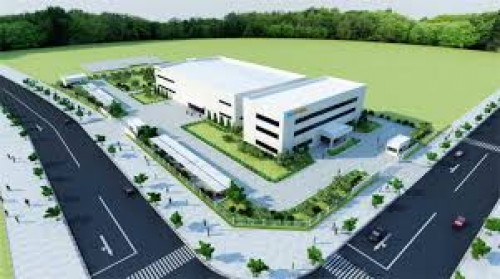



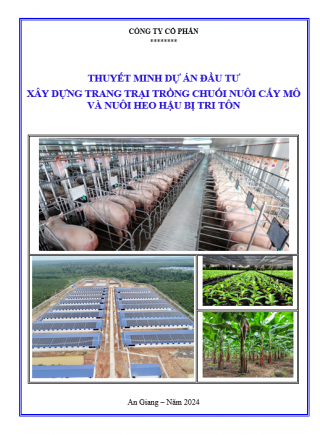



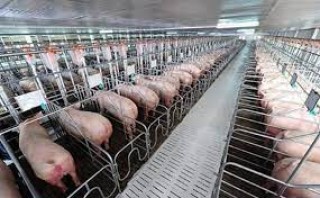

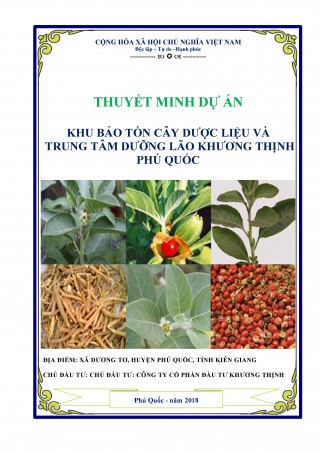
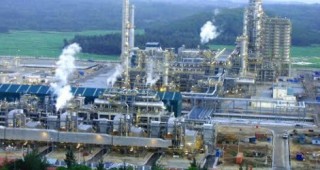
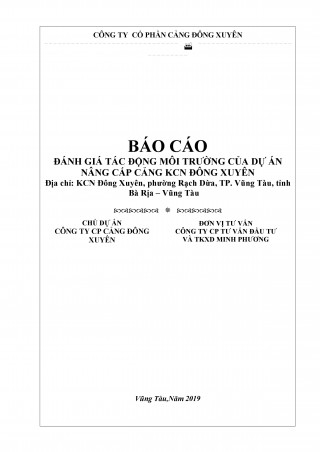







Gửi bình luận của bạn